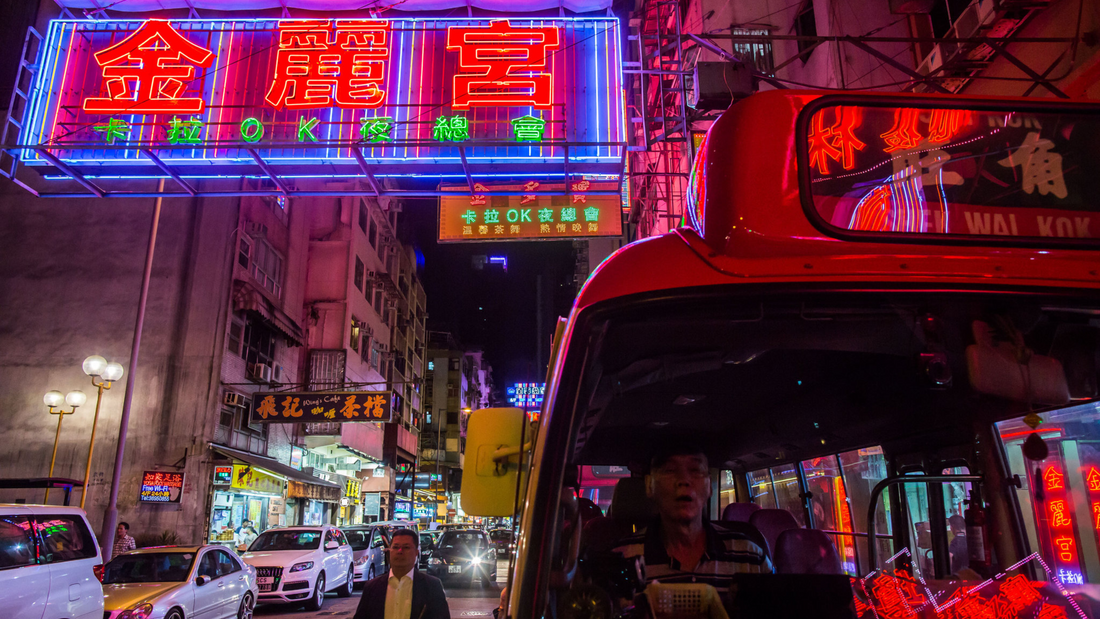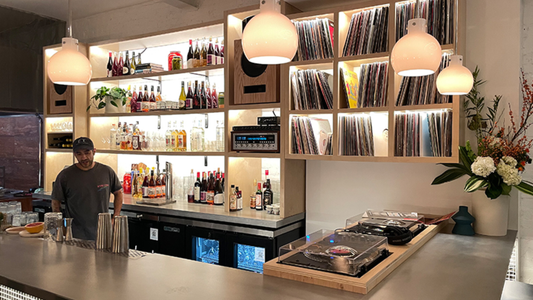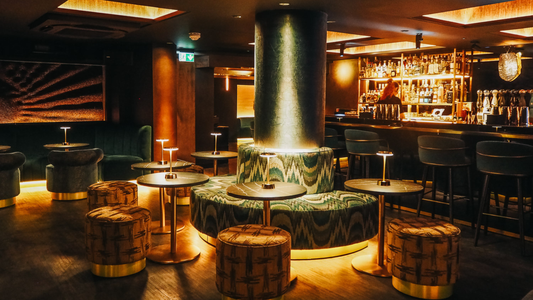
Hong Kong: Neon Above, Silence Below
By Rafi Mercer
Hong Kong listens vertically. The city rises in glass and steel, stacked high against the harbour, its streets compressed, its sound dense. Walk through Mong Kok at night and the air is thick with neon, voices, traffic, trams, the layered hum of a place that never really rests. Yet beneath and above, behind doors in tower blocks or basements, another layer exists: listening bars, sanctuaries where silence is carved out of the city’s noise, where vinyl spins as antidote to acceleration.
Hong Kong has always been defined by contrast. Colonial heritage and Chinese tradition, finance and street markets, high-rise modernity and slow rituals like tea. Its sound follows the same rhythm — scale and intimacy, noise and pause. Listening bars make sense here precisely because they seem improbable. In a city so compressed, space is valuable, time scarce, silence rare. And yet, rooms appear, modest but meticulous, where whole albums are played from beginning to end, where the outside roar fades into detail.
The precedent, of course, is Japan. Tokyo showed Asia how silence could be cultural, how fidelity could be ritual. Hong Kong borrows that model but bends it. Its listening bars are less austere, less doctrinal. Conversation softens, but it is not eliminated. The glow of neon sometimes slips through the blinds. The city refuses total silence, but it does allow moments of focus. This balance is uniquely Hong Kong: discipline and density, ritual and restlessness.
The comparison with New York is natural. Both cities are vertical, financial, restless, global. Both carry noise as identity. And in both, listening bars become radical counterweights. But where New York often frames sound in basements, Hong Kong places it both underground and above the skyline. To listen to a record high up in Central, with the harbour spread below, is to feel the city differently — as if vinyl can reorder its geometry. Compared with London, which layers history horizontally, Hong Kong stacks experience vertically. Sound here feels compressed, then suddenly released.
Vinyl itself thrives in the city, though space is limited. Shops are small but curated with obsession, carrying Japanese pressings of Blue Note, ECM imports, rare Cantopop LPs, and global reissues. To hold a record here is to feel defiance: permanence in a place that often feels temporary. The resurgence of vinyl is not only about nostalgia but about reclaiming presence, a theme echoed across our listening bar albums essays. In Hong Kong, a record feels heavier precisely because space is scarce.
The repertoire in listening bars mirrors the city’s hybridity. Nights often begin with jazz — Coltrane, Davis, Mingus — then slip into ambient textures or contemporary electronic sounds. Local voices are present too: reissued Cantopop, experimental Hong Kong indie, proof that the city still speaks musically in its own accent. The curation feels global but not generic, a dialogue between heritage and modernity.
Drinks are part of the ritual, and whisky often takes centre stage. In a city where business and leisure blur, a dram pairs naturally with the discipline of the record. As we explored in whisky in the listening bar, the spirit slows the pace, deepens the ear, turns a room into ritual. Here, whisky feels especially apt — global, refined, weighty against the city’s speed.
Philosophically, Hong Kong listening bars remind me of Silence is a Luxury. In a city where silence is rare, it becomes valuable. To step into a listening bar here is to feel silence treated as currency. The city trades in finance; the bar trades in fidelity. Both rely on scarcity, both create value from what is hard to find.
What fascinates me most is how quickly the culture has taken root. Younger listeners, raised on streaming and skyscrapers, find themselves drawn to these rooms. They arrive with phones, but they dim the screens. They expect noise, but they discover stillness. The duality feels natural: high-rise speed by day, vinyl patience by night. Hong Kong thrives on paradox, and listening bars become part of its rhythm.
Step out afterwards and the city roars back — ferries crossing the harbour, trams rattling, neon buzzing. Yet your ear is tuned differently. You hear rhythm in the crossing signals, harmony in conversations, syncopation in rain on steel. The listening bar has reframed the city, taught you to hear music not only in the grooves but in the streets themselves.
Hong Kong belongs in the Atlas because it proves that listening bars are not only sanctuaries but translations. They take the global model — the kissa, the vinyl, the silence — and bend it into a city’s shape. Here, that shape is vertical, dense, luminous. Neon above, silence below.
Rafi Mercer writes about the spaces where music matters. For more stories from Tracks & Tales, subscribe, or click here to read more.
👉 Do you want me to expand this Asia cluster next with Shanghai or Bangkok, or pause and strengthen cross-links between the essays we’ve already written (Tokyo, Osaka, Seoul, Hong Kong) before moving further?







